A Brief History
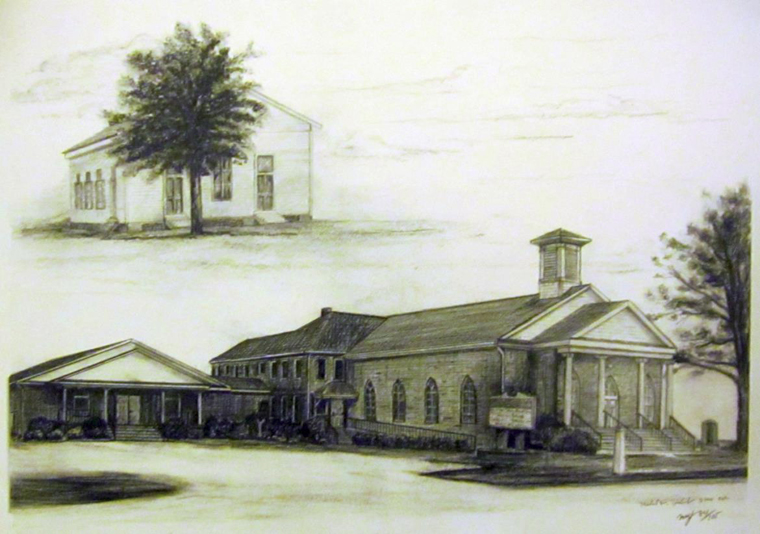
Drawing by Michael W. Holcomb 2008
In 1660 and 1662 Yeopim King Kiscutanewh granted land to Nathaniel Batts and George Durant recognized as the first land deeds in North Carolina. By 1697 the Yeopim leaders complained to the colonial government about nearby European settlers encroaching on their lands. In 1704 the Executive Council granted 10,240 acres (16 square miles) along both sides of the North River to the Yeopim Nation. The deed for the reservation granted the Yeopim exclusive hunting and fishing rights. The area known as Indiantown was only about six miles north of Raymons/Raymonds Creek where the first worshipers of what would become Shiloh Baptist Church first began to meet.
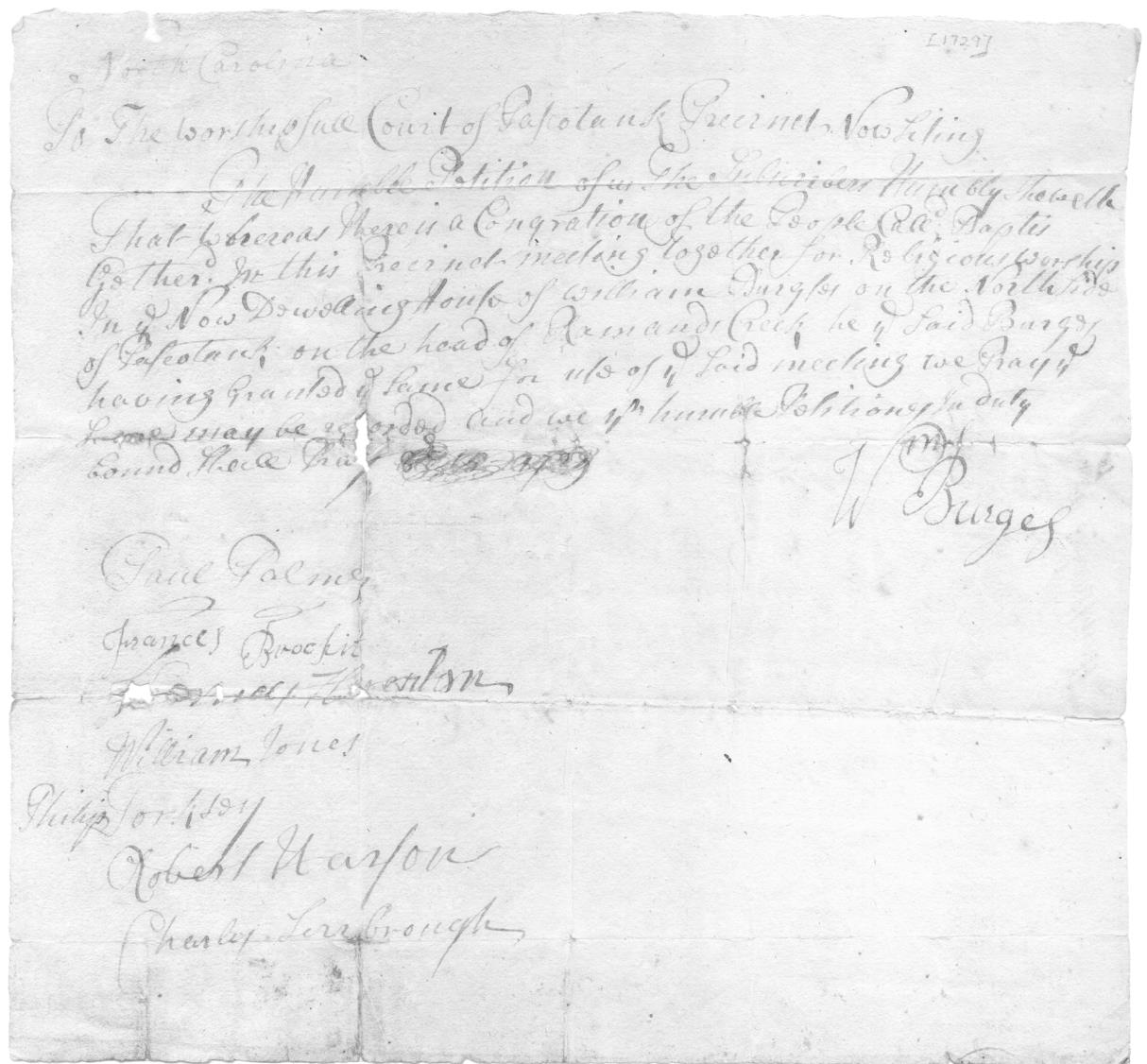
(Courtesy of Wilson Library, University of North Carolina.)
The beginnings of Shiloh Baptist Church are humble and span back to before 1727, when a Baptist missionary named Paul Palmer, organized the Shiloh Baptist Church. William Burges (spelled with one “s”) was the first pastor. The total population of the area known as North Carolina was about 30,000 people. The entire Albemarle area accounted for approximately 4,000 residents. In 1711, the Tuscarora Indians, who lived on the southern side of the Albemarle Sound, went on the warpath and almost overwhelmed the colonists of the Albemarle region. The Yeopim/Yawpim Nation who had settled around the North River on the nearest reservation to what is now the township of Shiloh, in Camden County were not greatly involved in the Tuscarora Wars since the two tribes were not allied with one another. Most likely, there were more Indians than colonists living in the area around the shores and rivers of the Albemarle region. Since the colonists were scattered and transportation was difficult, the organized church began meeting once a month in the home of William Burges which was located about three miles south of the present location of Shiloh Baptist Church at the head of Raymons/Raymonds Creek. Prior to 1775, present day Camden County was still a part of Pasquotank County requiring that official business be carried across the Pasquotank River to be recorded.
The earliest known existing record of the Shiloh Baptist Church is a petition to the Court of Pasquotank Precinct, requesting that the court record the meeting of the Baptist Congregation. This petition was signed on the bottom right by William Burges; also to the left are the signatures of Paul Palmer, Francis Brocket, Thomas Herenton (modern spelling Harrington), William Jones, Philip Torksey (there are several modern spellings including Toxey and Doxey), Robert Wasson, and Charles Scarborough (once misinterpreted from the script on the original document as “Leutrough”). Shiloh Baptist Church is the oldest continually worshipping Baptist church in North Carolina. By 1727 people were worshiping in the home of pastor, Rev. William Burges. The number of worshipers grew and in 1736 Reverend Burgess built a small church next to his home. The petition was made by the church to the King's Court September 5, 1729 for them to continue worshiping as they had been for several years. A photographic copy is available in the church today.
According to Morgan Edwards, an early Baptist Historian, a meeting house was built on the land of the pastor, William Burges in 1736. Edwards gave the membership at that time as about 30. His records also show January 20, 1758, as the date when the constitution of the church changed from the General to the Particular Order. He lists the names of 12 members who had "embraced the Particular Scheme" and states that "in 13 years they increased from 12 to 192 and that most of the brethren of the General Persuasion had rejoined them." When these 12 defected to the Particular Baptist, they erected a separate meeting house, described by Edwards as being fifty feet by twenty-five feet on the ground owned by the pastor, John Burges, son of William Burges. The meeting house was located on Portahonk Creek, a distance of about three miles from the 1736 meeting house, and across the road from the present building.
The new location near the present location was now about halfway between Raymons Creek and Indiantown. A marker was placed on this site in 1974. In 1723, the Yeopim Indians had gained permission to sell their reservation land and began to sell their land in multiple parcels over time. By this time the Yeopim leaders had taken on English names such as John Durant, John Barber, John Hawkins, Henry Gibbs, and George Durant so it becomes difficult to determine from any surviving primary documents the degree of interaction between the church and the Yeopim people from the reservation. Evan Forbes served the church as pastor 1829-1842, 1845-1848, 1851-1853, and 1853-1857. James Forbes and his family, originally from Scotland, were admitted to North Carolina on October 20, 1701. James Forbes was granted 532 acres on the east side of the Pasquotank River on October 21, 1715. This land was adjacent to the Yeopim Reservation so it is reasonable to think that there was at least some interaction between the Forbes family and the Yeopim. Wesley Episcopal Methodist Church in Old Trap began meeting around 1834. Providence Baptist Church located in what is now Shawboro in Currituck County was originally called Providence Meeting House in 1817 and was constituted as a Baptist church in 1826. Although the evidence is mostly circumstantial, it is likely that if the Yeopim Indians accepted Christianity and assimilated with the Colonial Europeans that Shiloh is where they would have had the greatest opportunity to do so.
The present sanctuary, which originally included a balcony for Negro Members, was built in 1848-49, at the cost of $2400.00. This meeting house was built on land included in John Burges' estate. In 1774, John's son, Dempsey Burges, conveyed the property to the Baptist Society.
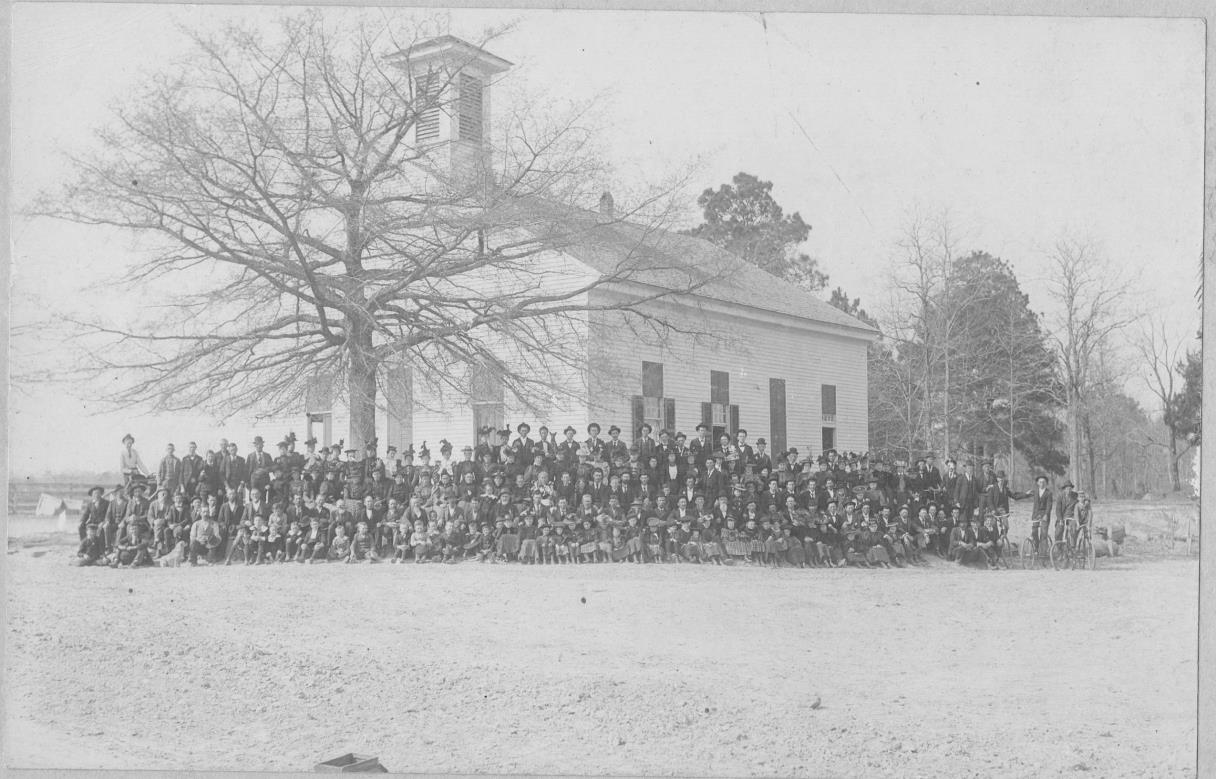
This photograph made by Zoeller, Morgan Company around 1895 pictures the congregation of Shiloh Baptist Church soon after the steeple was added to the building. Mary and Luke Stevens donated funds and labor to add the steeple in 1878. Luke Stevens died from flu and pneumonia on March 8, 1878 and Mary Stevens died from the flu ten days later. (Courtesy of Linda Ann Mansfield.)
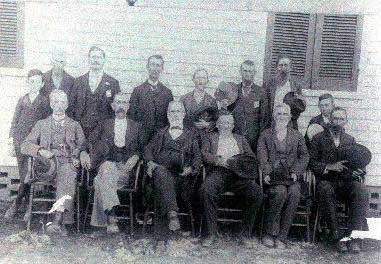
The deacons and pastor of Shiloh Baptist Church in 1895 are seated in chairs, two of which are displayed in the modern church. They are, from left to right, (first row) Joseph Morrisette, Samuel G. Squires, Reverend R. R. Overby (pastor), Nathan Stevens, Enoch Daily, Billy Stevens; (second row) Herbert Morrisette (boy), Elijah Staples, Charles Garrett, Charles Berry, John Godfrey, Marshall Toxey, Joseph Walston, and an unknown boy. (Courtesy of Linda Ann Mansfield.)
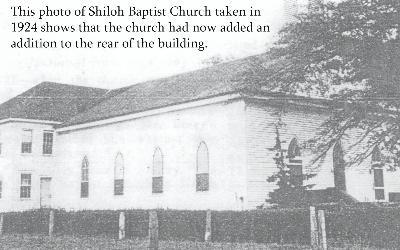
Eighteen Sunday School rooms were built in 1924 and fourteen more were added in 1954-55.
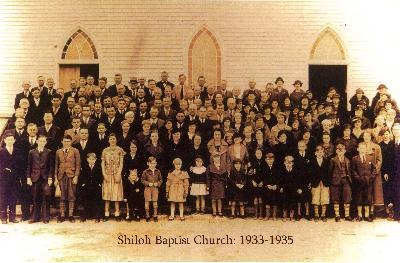
When the sanctuary was renovated in 1949, the baptistery was installed, the choir loft was built and an electric organ was purchased. This organ was replaced in 1973.
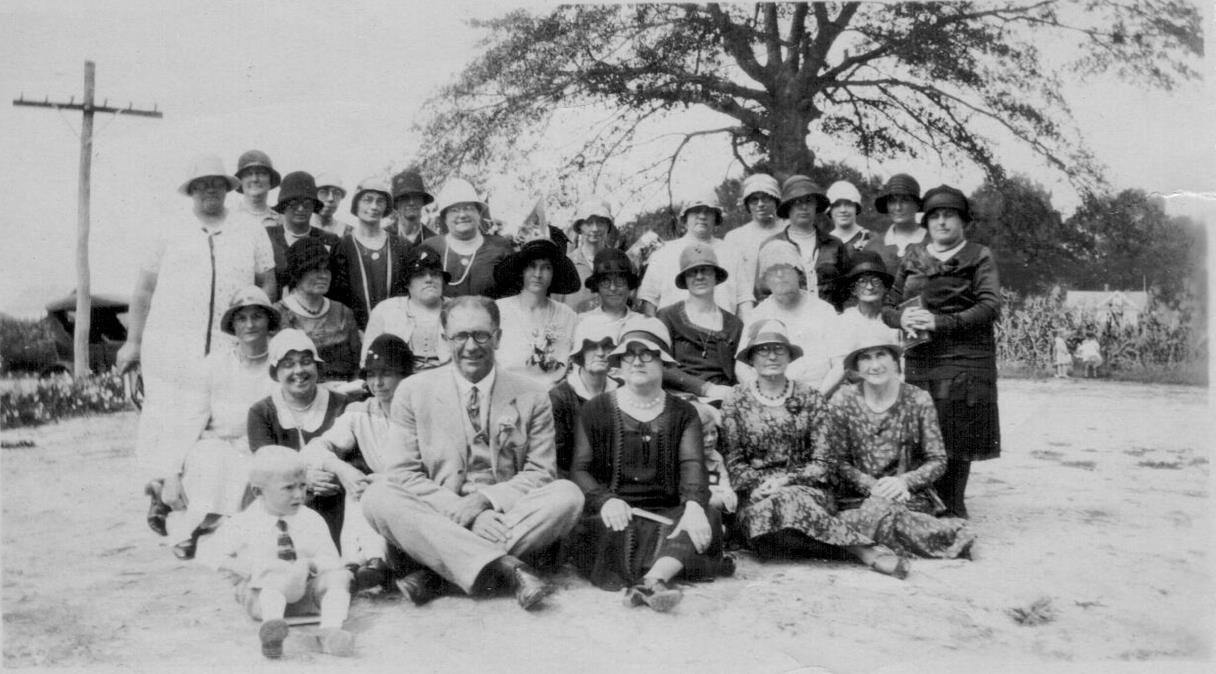
Reverend W. L. Barrs served as pastor of Shiloh Baptist Church from 1927 until 1928. Barrs and his wife have come back to visit the Shiloh Baptist Church ladies and they all have their picture made at Elizabeth City Beach in 1929. The boy at the front left is Marvin Jordan. (Courtesy of Linda Ann Mansfield.)
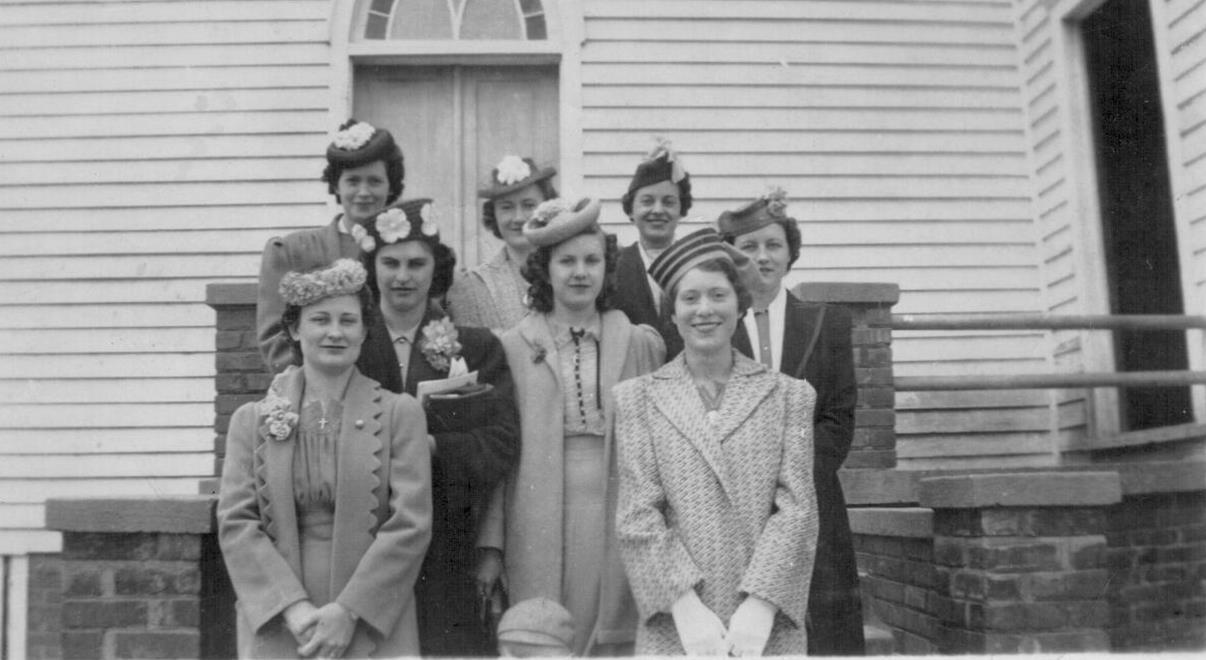
Some of the young women attending Shiloh Baptist church in the early 1950s are, from left to right, (first row) Mary Elizabeth Bartlett Gregory, Hasseltine Sawyer, Elizabeth Jordan Riggs, Nellie Cartwright Berry; (second row) Laura Lee Davenport, Mary Elizabeth Mercer, Mary C. Sawyer, and Florence Walston. The photograph is taken before the church was bricked. (Courtesy of Linda Ann Mansfield.)
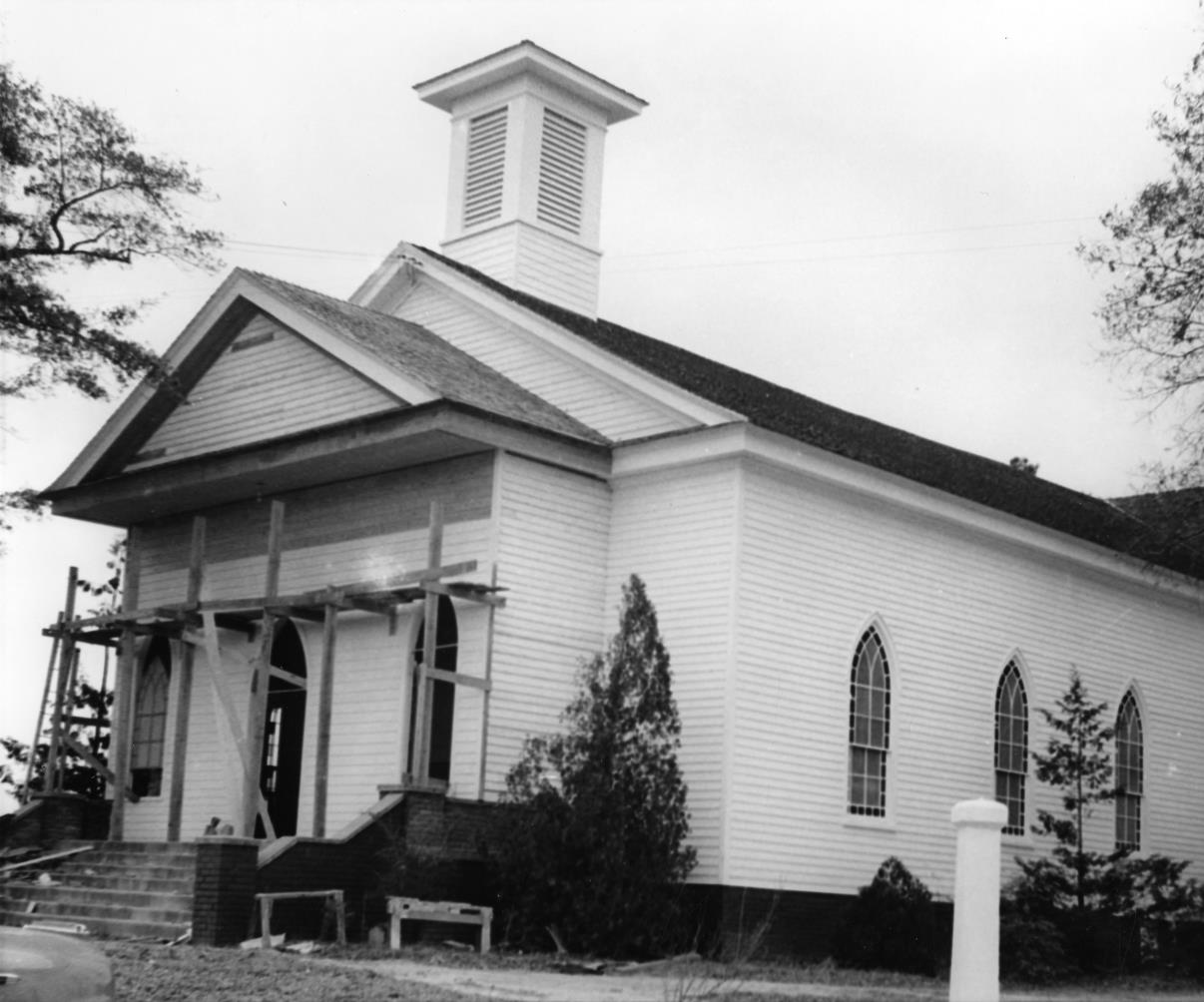
In 1947 Shiloh Baptist Church underwent a major remodeling which involved replacing two front doors with windows and the single central window with a double door. Under the influence and guidance of Paul Palmer and William Burgess, Shiloh Baptist Church congregation began to continually serve the community of Shiloh as a Baptist Church since 1727 making it the oldest known Baptist church in North Carolina. (Courtesy of the Outer Banks History Center, Manteo, NC, David Stick Collection.)
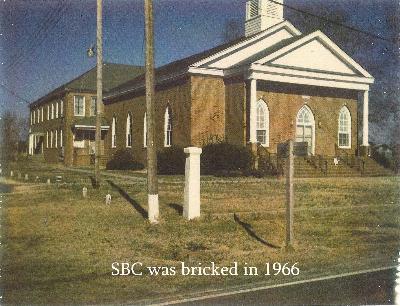
The sanctuary was air-conditioned in 1969, and in 1974, air conditioning was installed throughout the rest of the church. New pews were purchased in 1955, and the structure was bricked in 1966. The Fellowship Hall, Pastor's Study, and offices were added in 1992. In 1994, the Children's Playground was built. Although the spiritual growth of the church cannot be accurately measured, a glimpse of its membership at specific times, during its history, might be significant. We do not know how many members there were when the church was organized in 1727. In 1736, the membership was given as about 30. By 1800, membership had increased to about 200. Associational minutes record membership in 1848 at about 369, 316 whites and 53 blacks. In 1857, membership had grown to 448, 369 whites and 79 blacks.
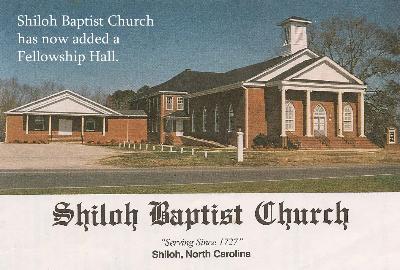
Services were interrupted during the Civil War, while Federal Troops occupied the building and used it as an arsenal. Associational minutes of 1890 list 91 male members and 316 female members. In 1925, there was a total of 461 members; in 1961, records show 617 members. In 2002, there were 457 members listed. In 2008, we had approximately 481 members on the church roll.
The church has not been without some controversy. As mentioned earlier, in 1758 the membership split over doctrinal differences. The minutes of the Kehukee Association reveal that Shiloh Church was admitted to that association in 1771, but was expelled in 1775 because the church and pastor, Henry Abbott, took a stand against proposed reforms. The church was readmitted in 1778 and remained with that association until 1806, when the Chowan Association was formed.
There have been four name changes since the church was formed. The first name given to the church was Burges' Meeting House. It was changed to North Meeting House and later, to Camden Meeting House. In 1812, the name Shiloh was adopted. The name Shiloh is biblical and means peaceable or pacific. Shiloh was the ancient city of Ephraim, which was one of the earliest and most sacred Hebrew sanctuaries.
• In 1831, Sunday School was organized within the church.
• We do not know when the Women's Missionary Union (WMU) was organized, but it was listed in the associational minutes in 1906.
• In January 1919, Reverend Joel Brown became the first full time pastor.
• The first Training Union was organized in 1921.
• Shiloh extended its ministries to the surrounding area by organizing nine churches:
Pungo, now known as Oak Grove Baptist, Princess Anne County, VA, in1762
Yoppim, in Chowan County, NC, in 1771
Cowenjock (now spelled “Coinjock”), in Currituck County, NC, in 1780
Knobs Crook, now known as First Baptist, in Elizabeth City, NC in 1786
Flatty Creek, now known as Salem Baptist, in Weeksville, NC, in 1790
Sawyer's Creek, in Camden, NC 1790
Shady Grove, in Currituck County, NC, in 1828
Oak Ridge, in Riddle (Camden County) NC, in 1889
Pleasant Grove, in Indiantown (Camden County) NC, in 1891
(Oak Ridge, and Pleasant Grove no longer exist, though Shiloh Baptist absorbed much of the memberships of the two churches.
Many ministers have been ordained here at Shiloh Baptist. They are listed as follows:
William Burges Sr., William Burges Jr., John Burges, Joshua White, Thomas Etheridge, David Duncan, William Lurry, David Biggs, Lemuel Burkitt, Evan Forbes, Jesse Bray, Benjamin Dozier, Abner Berry, Wells Briggs, Charles S. Burgess, John L. Pritchard, A.W. Burfoot, Gideon Bray, Charles B. Williams, M.B. Toxey, James B. Sawyer, Don Clinton, Steve Hughes, Kenneth Wallace.
The most noted of these, was Dr. Charles B. Williams. Dr. Williams was ordained in 1890 and later became an educator and author. He taught Greek at Southwestern Seminary, from 1905-1919. He held the position of Dean the last six years at Southwestern. He served as president at Howard College from 1919-1921. Dr. Williams went on to Mercer University, in Georgia, where he taught New Testament Interpretation for four years. He then became a professor of Greek and Ethics at Union University in Tennessee until 1932. Dr. Williams most noted literary work is his translation of the New Testament into the language of the people. (Moody Press 1949) In 1941, Dr. Williams returned to Shiloh and served as pastor until 1946.
In 1968, Shiloh Baptist extended its ministries by broadcasting the Morning Worship Service over the radio in Elizabeth City, NC, at WCNC. The broadcast continued until 1980.
Shiloh Church has also be influential in political affairs. One of our early pastors, Henry Abbott, was elected to both the State Congress Meetings in Halifax, NC in 1776. On April 12, 1776, the first Congress adopted the famous Halifax Resolves. The last paragraph of the Halifax Resolves reads in part: "Resolve, that the delegates for the Colony in the Continental Congress, be empowered to concur with the delegates of the other colonies in declaring Independency...”
The Provincial Assembly met again in Halifax, in November of that same year. One of Abbott's assignments was with a "committee to form, and lay before this House a Bill of Rights, and form a constitution for the government of this state." Tradition credits Abbott with being the author of Article Nineteen of the State Constitution, "That all men have natural and inalienable rights to worship Almighty God according to the dictates of their conscience.”
Dempsey Burges was a member of the majority of the congress convened during the Revolutionary period, including the two at Halifax, in 1776. Burges became Lt. Colonel in the Continental Army, during the Revolutionary War and was a member of the United States Congress from 1795-98. According to Baptist Historic Papers, in 1776, the deacons of Shiloh Church were asked by the newly elected governor, to serve as Magistrates and Conservators of the peace, until the machinery of state government could be put into operation.
In 1990, Shiloh church history added a new page. Earline Revelle was ordained as the first woman deacon to serve in the church and served Shiloh Baptist Church as an active deacon for three terms.
In 1995, Andrea Garrett was hired as an American Sign Language Interpreter.
In May of 2000, Shiloh Baptist embarked on a more relaxed style of worship. The Early Worship Service began. It provided a relaxed atmosphere with Praise and Worship Music, a condensed version of the sermon for the 11:00 Worship Service, and a more contemporary worship experience. This worship experience still goes on in 2015.
Additional information is available from:
Shiloh Baptist Church
PO Box 31
Shiloh NC 27974
